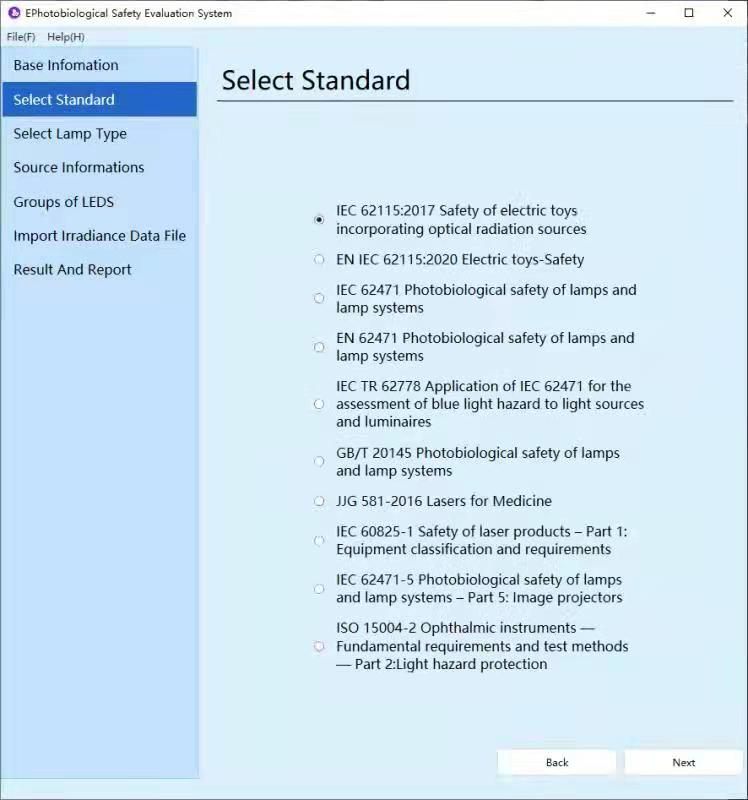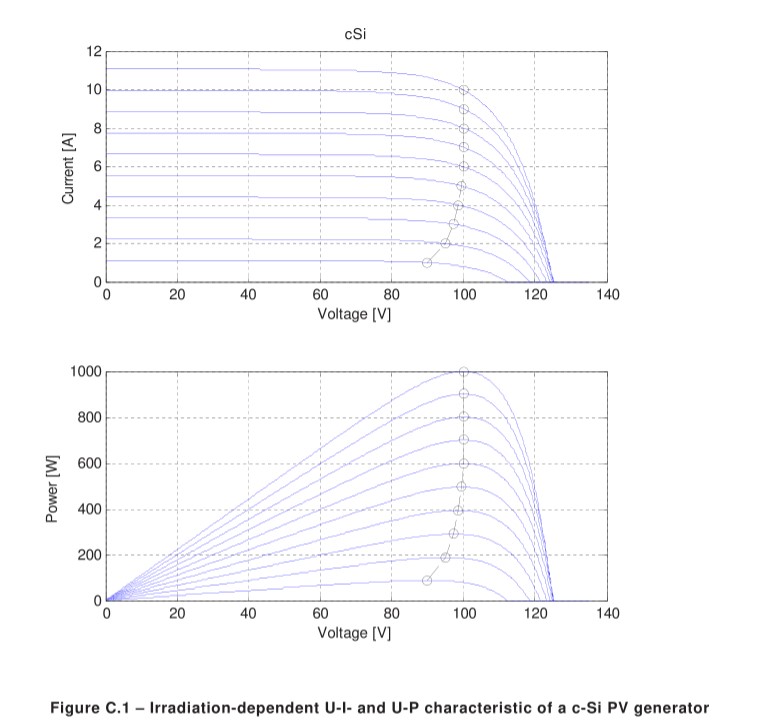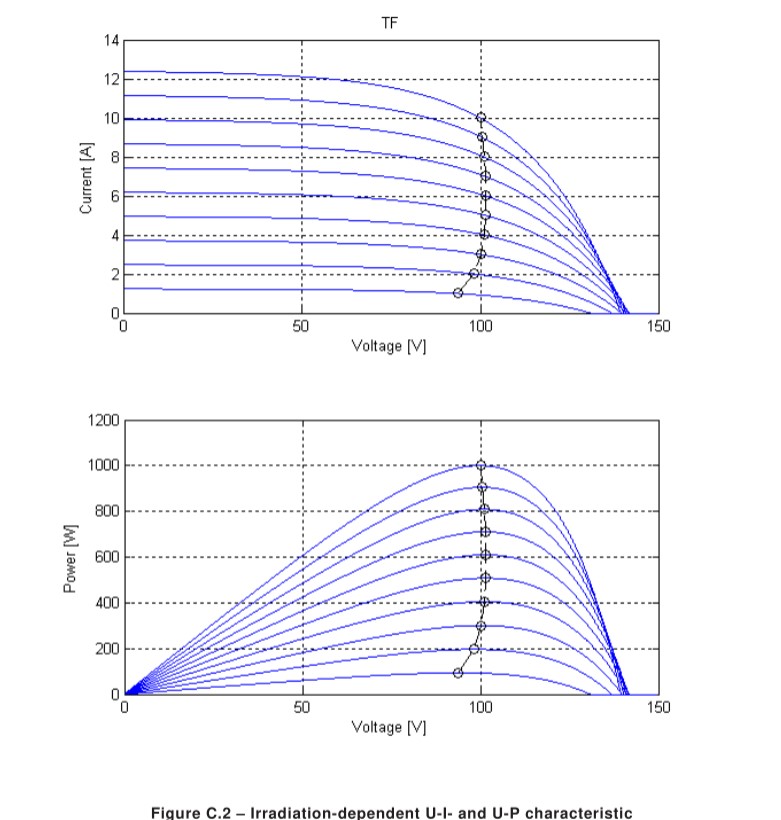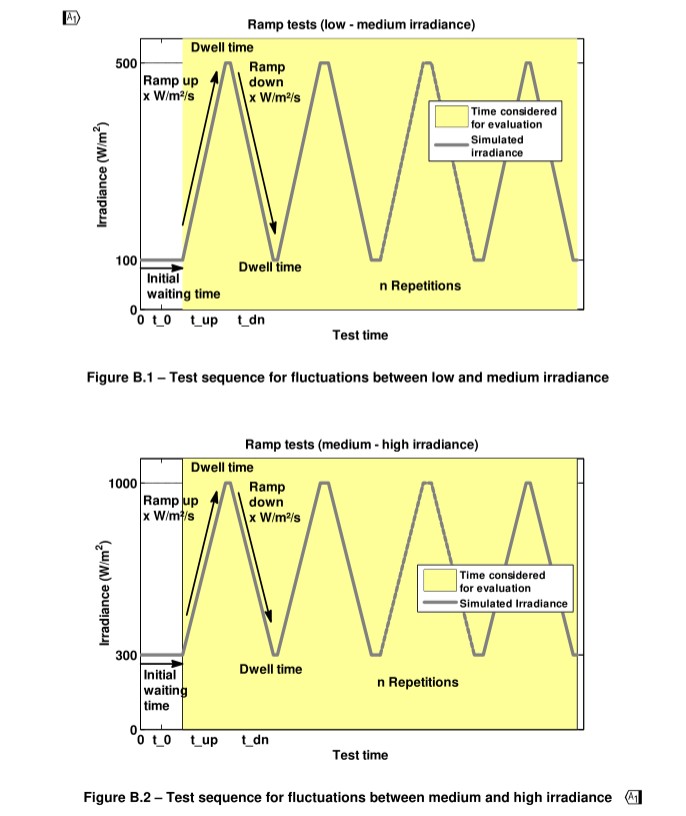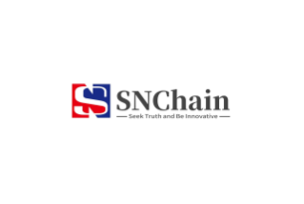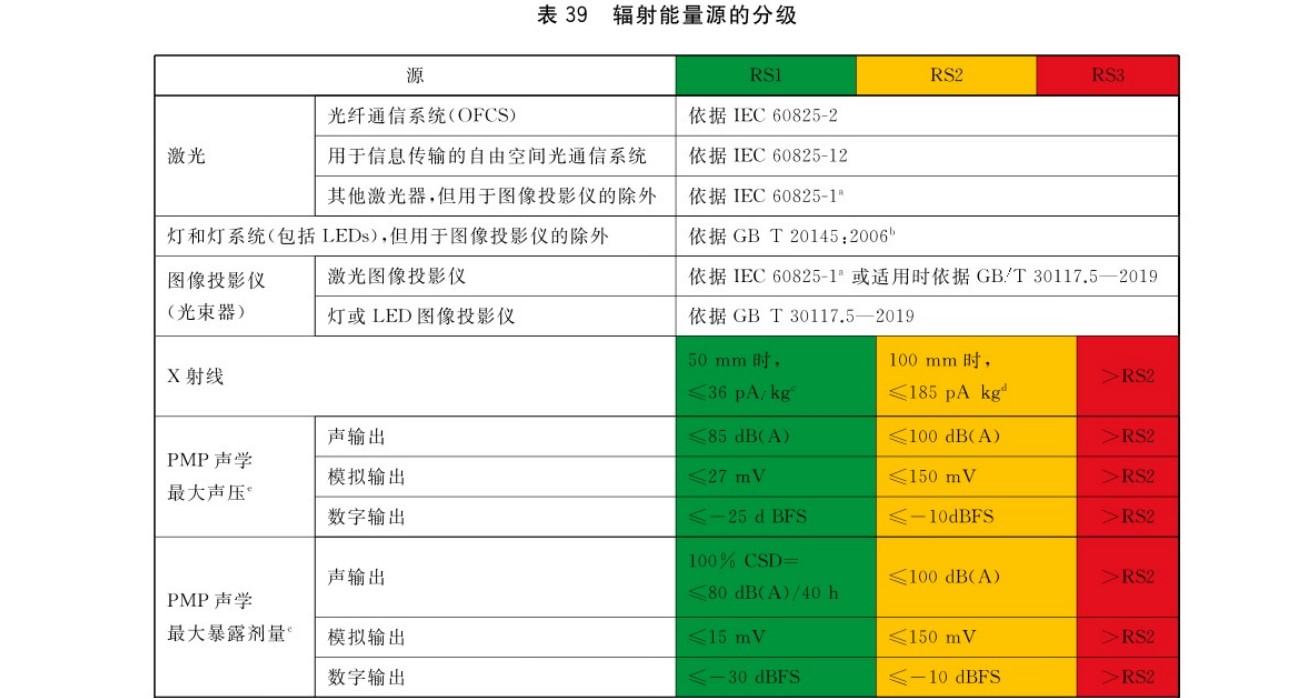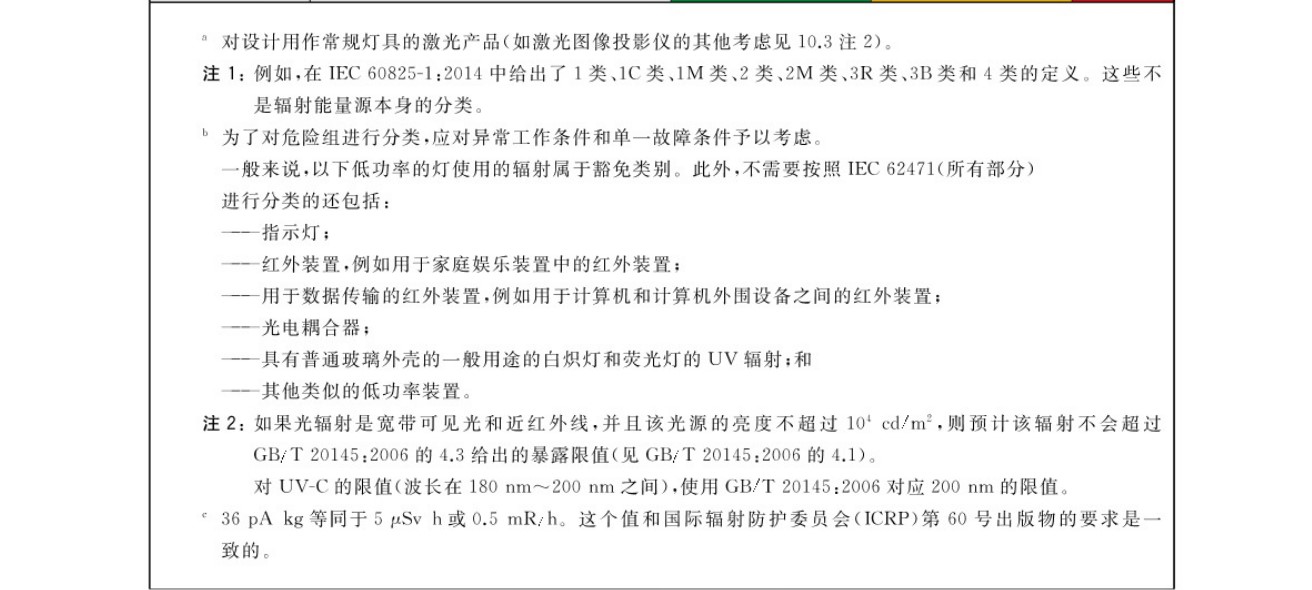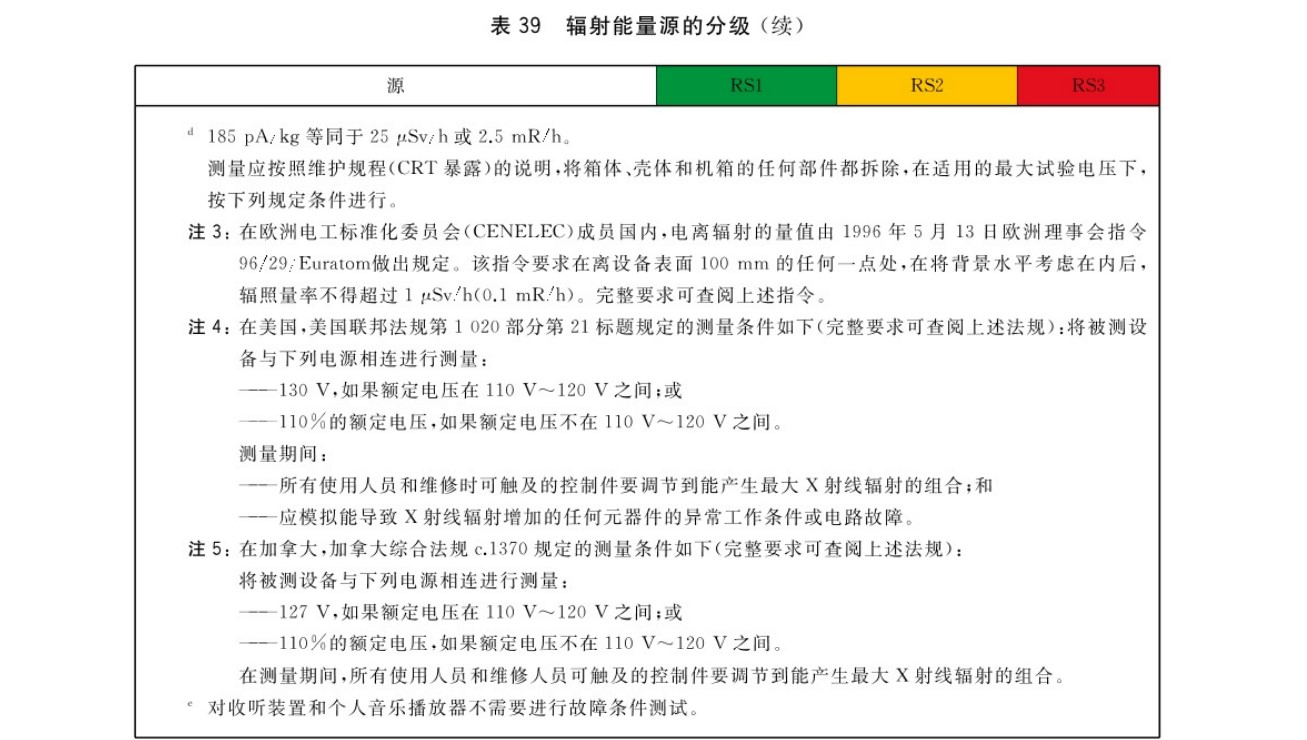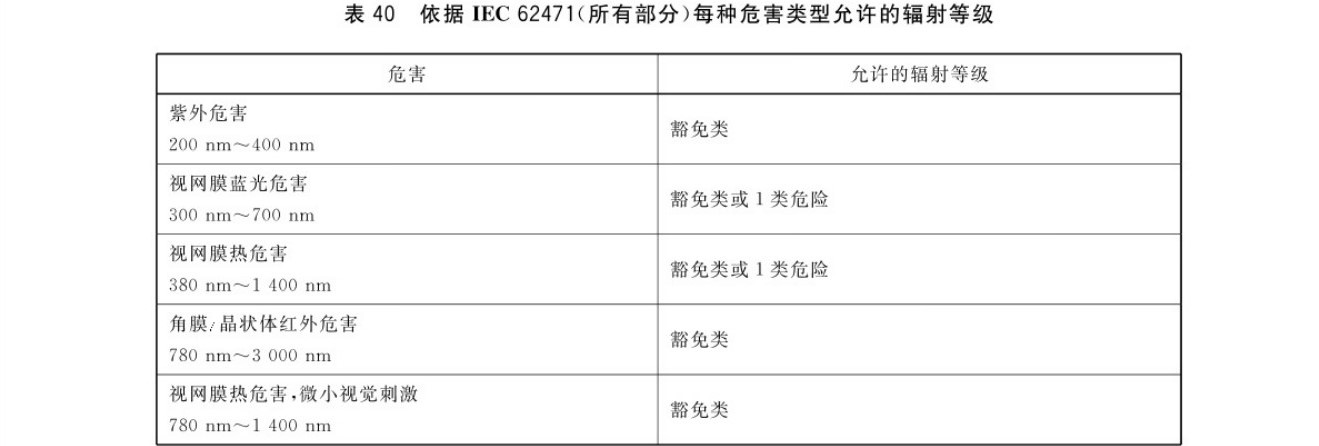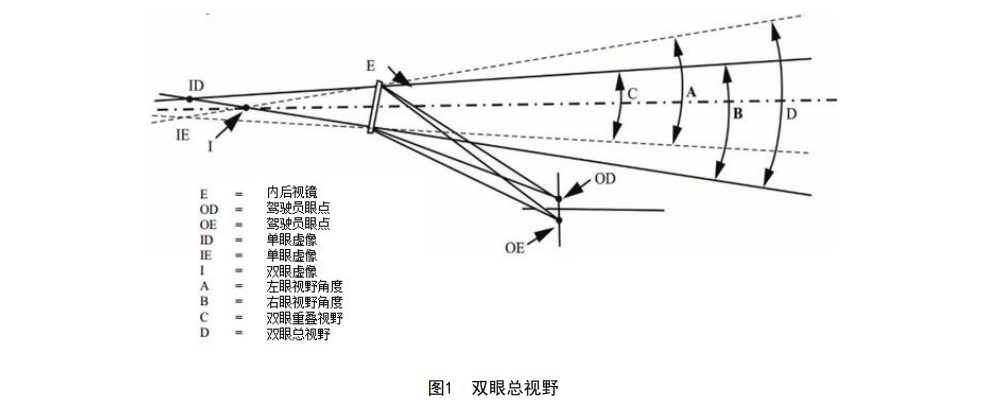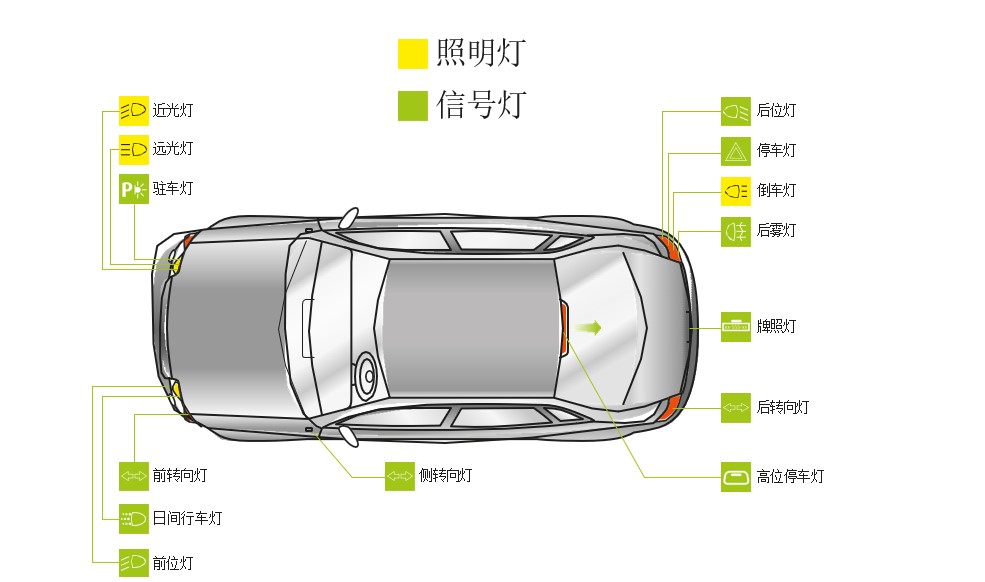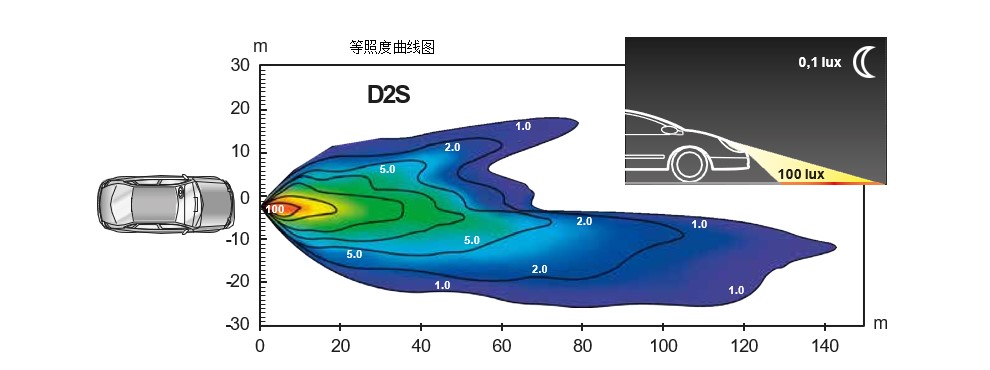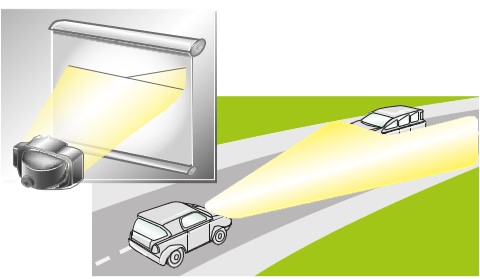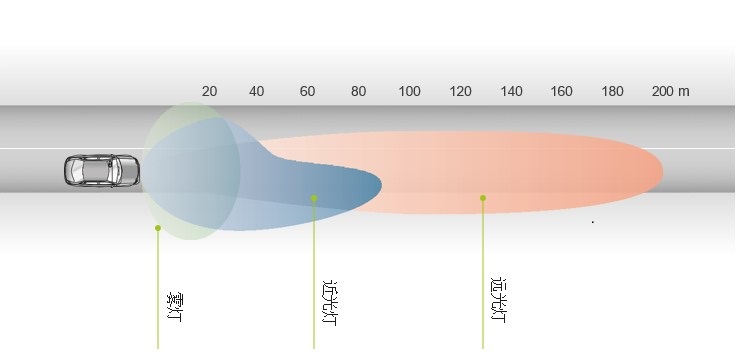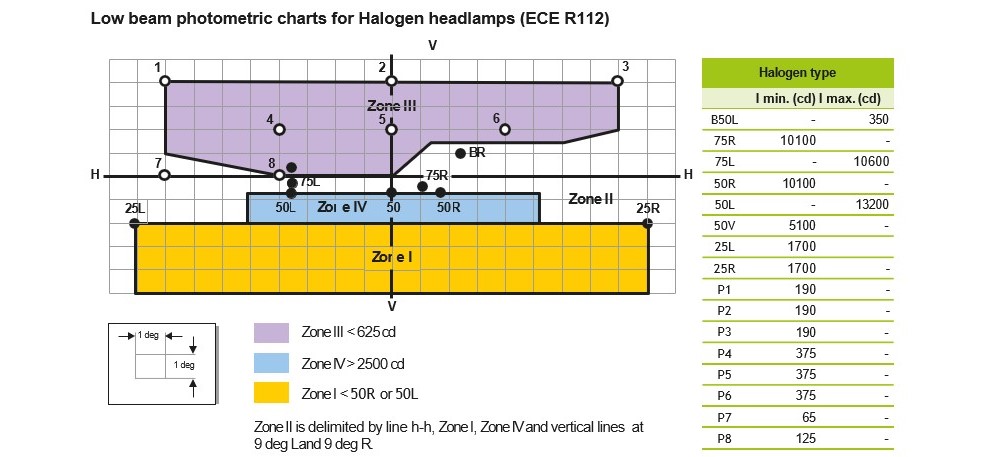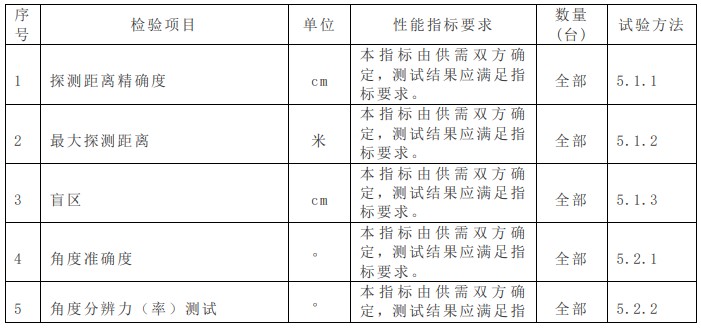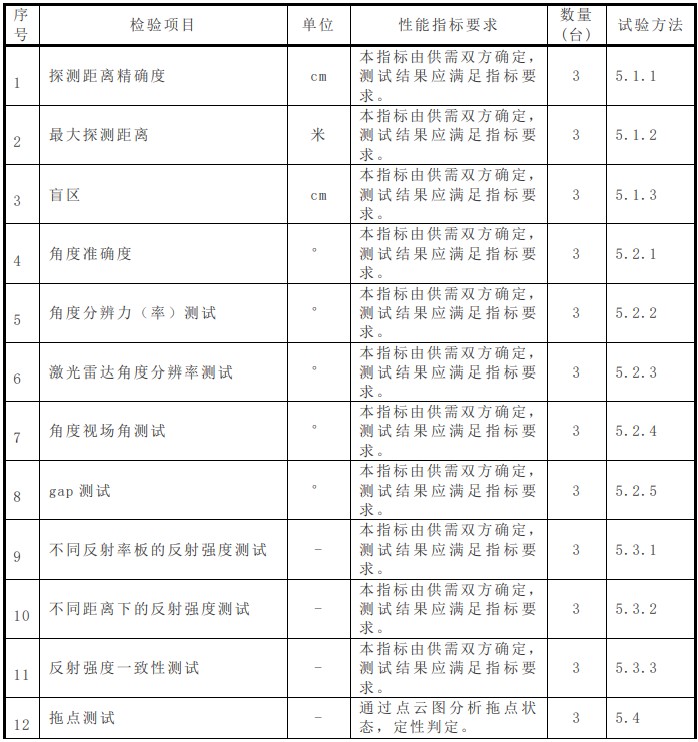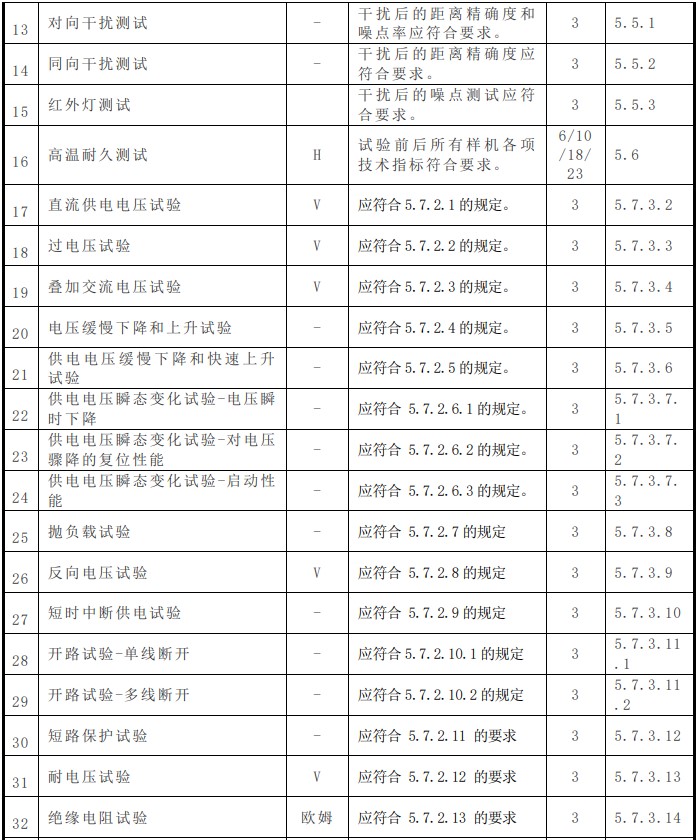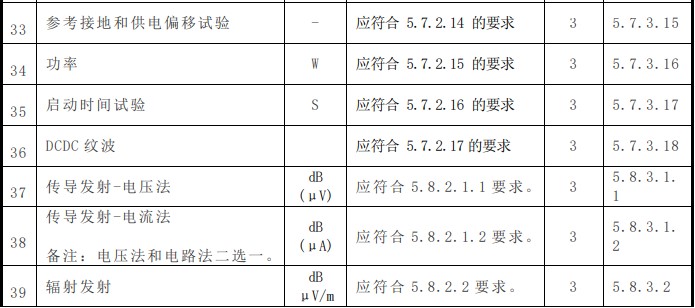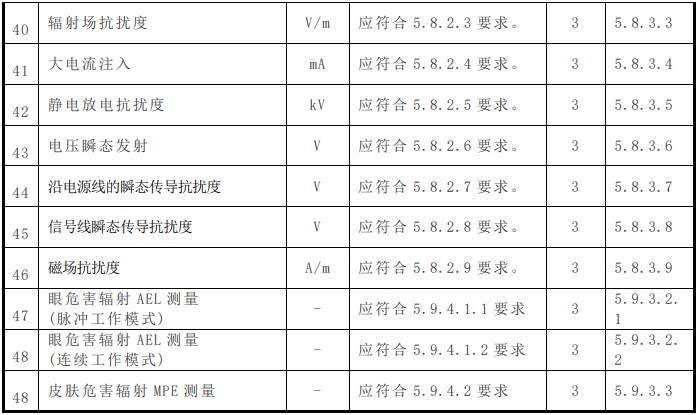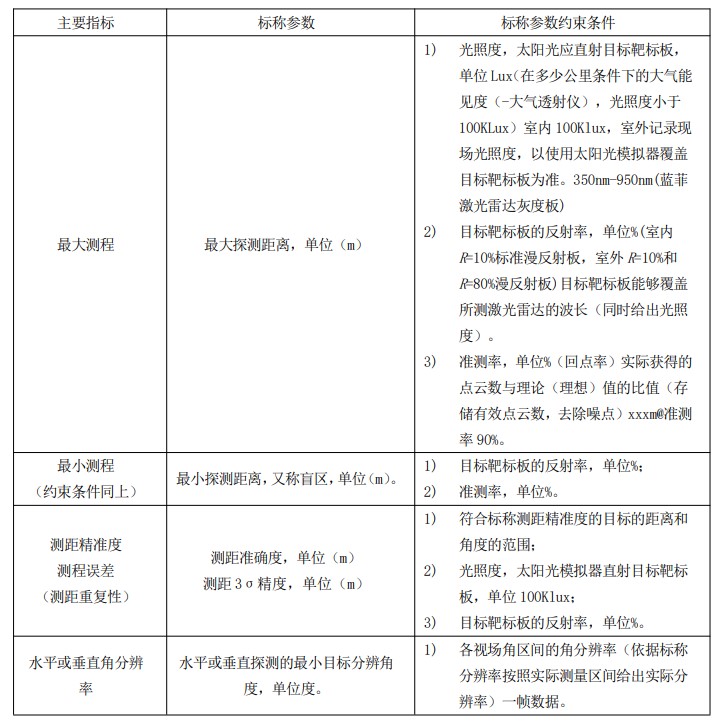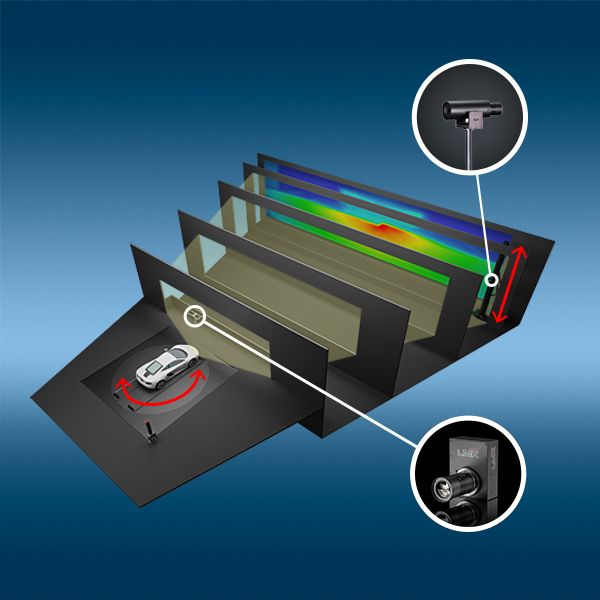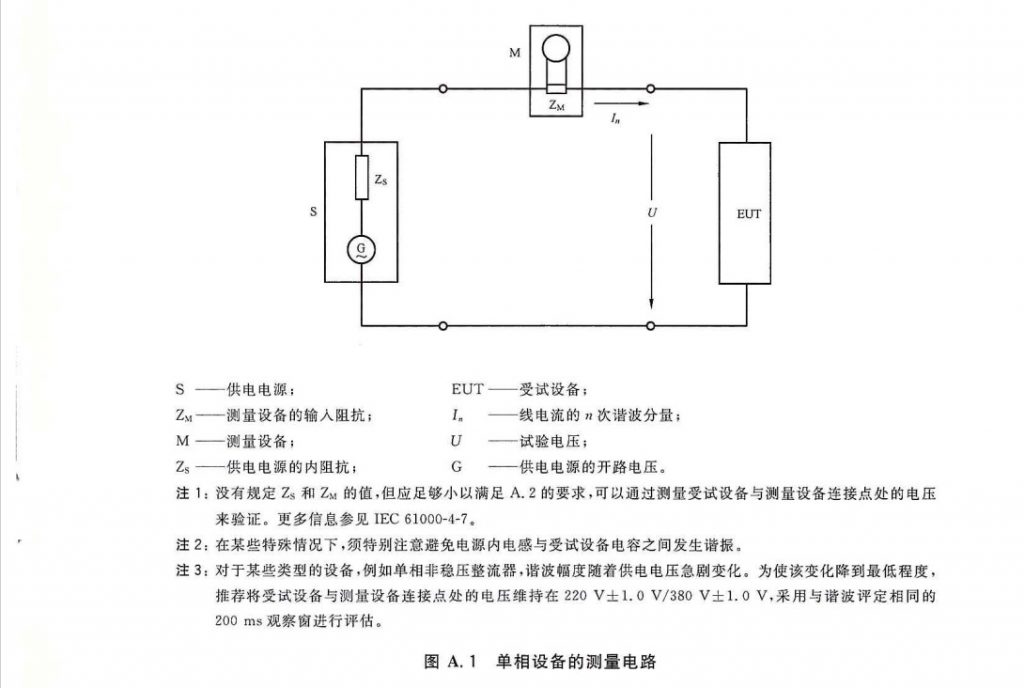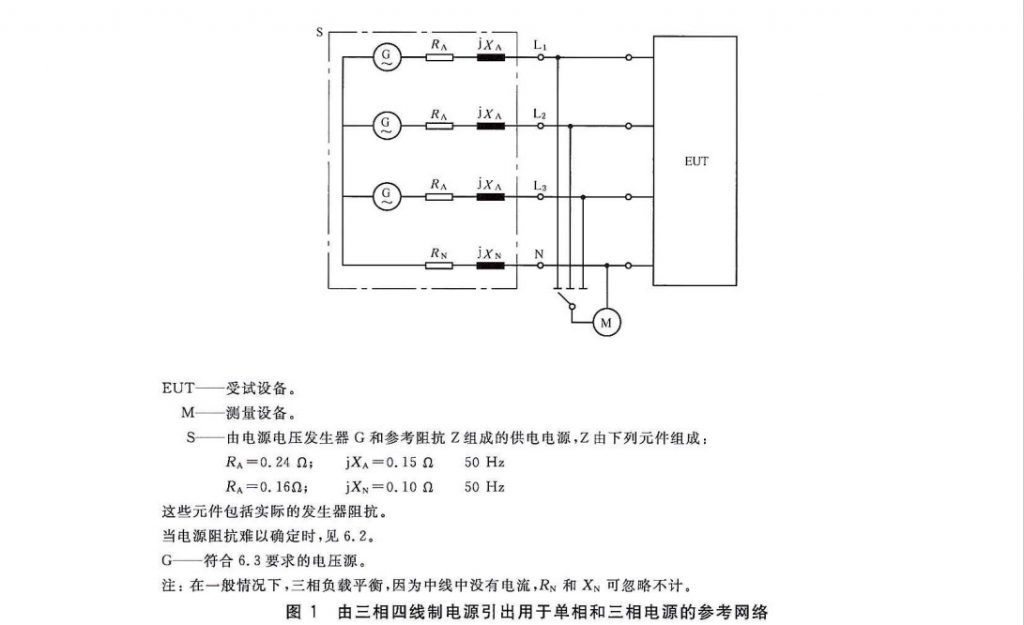IEC 60825-1:2014 Safety of laser products - Part 1: Equipment classification and requirements
IEC 60825-1:2014 激光产品的安全性 - 第1部分:设备分类和要求
GB 7247.1-2012 激光产品的安全 第1部分:设备分类、要求
JIS C6802:2014 レーザ製品の安全基準
JIS C6802:2014 激光产品安全标准
Class 1 laser product
any laser product which during operation does not permit human access to laser radiation (accessible emission, see 3.2) in excess of the AEL of Class 1 for applicable
wavelengths and emission durations (see 5.3 and 4.3 e)
1类激光产品
在工作期间,在相应波长和发射持续时间内,人员接触的激光辐射(见3.2)不允许超过1类可达发射限值(AEL)的激光产品(见5.3和4.3 e)。
Class 1C laser product
any laser product which is designed explicitly for contact application to the skin or non-ocular tissue and that:
-during operation ocular hazard is prevented by engineering means , i.e. the accessible emission is stopped or reduced to below the AEL of Class 1 when the laser/applicator is removed from contact with the skin or non-ocular tissue,
-during operation and when in contact with skin or non-ocular tissue, irradiance or radiant exposure levels may exceed the skin MPE as necessary for intended treatment procedure, and
-the laser product complies with applicable vertical standards
1C类激光产品
专门设计应用于皮肤或非眼组织接触的激光产品,并且:
-在工作期间,通过工程手段防止眼部危险,例如当激光/设备从皮肤或非眼组织接触中移除时,可达发射停止或减少到低于1类可达发射限值(AEL)
-在工作期间,当与皮肤或非眼组织接触时,在必要的治疗过程中,辐照度或暴辐值可能超过皮肤最大暴辐限值(MPE),以及
-激光产品符合适用的等级标准。
Class 1M laser product
any laser product in the wavelength range from 302,5 nm to 4 000 nm which during operation does not permit human access to laser radiation (accessible emission, see 3.2) in
excess of the AEL of Class 1 for applicable wavelengths and emission durations (see 4.3 e)), where the level of radiation is measured according to 5.3 a)
1M类激光产品
在302.5 nm-4 000 nm波长范围内,工作期间,在相应波长和发射持续时间内,人员接触可达激光辐射(见3.2)不允许超过 1 类可达发射限值 (AEL)的激光产品(见 4.3 e)(其中辐射水平依据 5.3 a 测量)。
Class 2 laser product
any laser product in the wavelength range from 400 nm to 700 nm which during operation does not permit human access to laser radiation (accessible emission, see 3.2) in excess of the AEL of Class 2 for applicable wavelengths and emission durations(see 5.3 c)
2类激光产品
在400 nm-700 nm波长范围内,工作期间,在相应波长和发射持续时间内,人员接触可达激光辐射(见3.2)不允许超过2类可达发射限值(AEL)的激光产品(见5.3 c)。
Class 2M laser product
any laser product in the wavelength range from 400 nm to 700 nm which during operation does not permit human access to laser radiation (accessible emission, see 3.2) in excess of the AEL of Class 2 for applicable wavelengths and emission durations(see 4.3 e)), where the level of radiation is measured according to 5.3c)
2M类激光产品
在400 nm-700 nm波长范围内,工作期间,在相应波长和发射持续时间内,人员接触可达激光辐射(见3.2)不允许超过2类可达发射限值(AEL)的激光产品(其中辐射水平依据 5.3 c测量)。
Class 3R and Class 3B laser products
any laser product which during operation permits human access to laser radiation (accessible emission, see 3.2) in excess of the AEL of Class 1 and Class 2, as applicable, but which does not permit human access to laser radiation in excess of the AEL of Classes 3R and 3B (respectively) for any emission duration and wavelength (see 5.3 d) and 5.3 e))
3R和3B类激光产品
在工作期间,人员接触可达激光辐射(见3.2)允许超过1类和2类可达发射限值(AEL),但在任何发射持续时间和波长,人员接触可达激光辐射不允许超过3R类和3B类各类可达发射限值(AEL)的激光产品(见5.3 d和5.3e)。
Class 4 laser product
any laser product which permits human access to laser radiation (accessible emission, see 3.2) in excess of the AEL of Class 3B(see 4.3 f))
4类激光产品
人员接触可达激光辐射(见3.2)允许超过3B类可达发射限值(AEL)的激光产品(见4.3 f)。
FDA(CDRH) CFR 1040.10/1040.11(Laser Notice 56)
Class I laser product means any laser product that does not permit access during the operation to levels of laser radiation in excess of the accessible emission limits contained in table I of paragraph (d) of this section.
I类激光产品是指在工作期间不允许进入超过本节(d)款表I所载可达发射限值的激光辐射水平的任何激光产品。
Class IIa laser product means any laser product that permits human access during operation to levels of visible laser radiation in excess of the accessible emission limits contained in table I, but does not permit human access during operation to levels of laser radiation in excess of the accessible emission limits contained in table II-A of paragraph (d) of this section.
IIa类激光产品是指允许人在工作期间接触到超过表一所列可达发射限值的可见激光辐射水平,但不允许人在工作期间接触到超过本节(d)款表二-A所载可达发射限值的激光辐射水平的任何激光产品。
Class II laser product means any laser product that permits human access during operation to levels of visible laser radiation in excess of the accessible emission limits contained in table II-A, but does not permit human access during operation to levels of laser radiation in excess of the accessible emission limits contained in table II of paragraph (d) of this section.
II类激光产品是指允许人在工作期间接触到超过表II-A所列可达发射限值的可见激光辐射水平,但不允许人在工作期间接触到超过本节(d)款表二所载可达发射限值的激光辐射水平的任何激光产品。
Class IIIa laser product means any laser product that permits human access during operation to levels of visible laser radiation in excess of the accessible emission limits contained in table II, but does not permit human access during operation to levels of laser radiation in excess of the accessible emission limits contained in table III-A of paragraph (d) of this section.
IIIa类激光产品是指允许人在操作期间接触到超过表二所列可接近发射限值的可见激光辐射水平,但不允许人在操作期间接触到超过本节(d)款表III-A所载可接近发射限值的激光辐射水平的任何激光产品。
Class IIIb laser product means any laser product that permits human access during operation to levels of laser radiation in excess of the accessible emission limits of table III-A, but does not permit human access during operation to levels of laser radiation in excess of the accessible emission limits contained in table III-B of paragraph (d) of this section.
IIIb类激光产品是指允许人在工作期间接触到超过表III-A可达发射限值的激光辐射水平,但不允许人在工作期间接触到超过本节(d)款表III-B所载可达发射限值的激光辐射水平的任何激光产品。
Class III laser product means any Class IIIa or Class IIIb laser product.
III类激光产品是指任何IIIa类或IIIb类激光产品。
Class IV laser product means any laser that permits human access during operation to levels of laser radiation in excess of the accessible emission limits contained in table III-B of paragraph (d) of this section.
IV类激光产品是指允许人类在工作期间接触到超过本节(d)款表III-B所载可达发射限值的激光辐射水平的任何激产品。
激光分类 激光分类说明
I 激光辐射不被视为危险的激光产品。
IIa 1,000 秒以下的观察不被视为危险,但超过 1,000 秒的慢性光束内观察被视为危险激光产品。
可应用于波长为400~710nm的可见带激光器。
II 慢性光束内观察被认为是危险的激光产品。
可应用于波长为400~710nm的可见带激光器。
II Ia 由于辐照度的程度,慢性光束内观察和临时光束内观察都被视为危险的激光产品。
此外,在光学仪器中直接观察光束是危险的,即使很短的时间。可应用于波长为400~710nm的可见带激光器。
IIIb 即使很短的时间,直接暴露在皮肤和眼睛被认为是危险的激光产品。
IV 不仅直接暴露在皮肤和眼睛上,而且短暂暴露于散射光中也是危险的激光产品。
